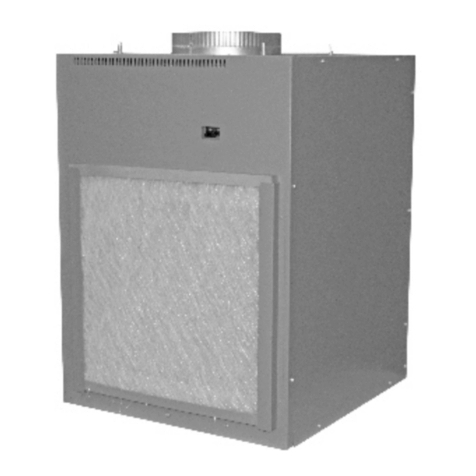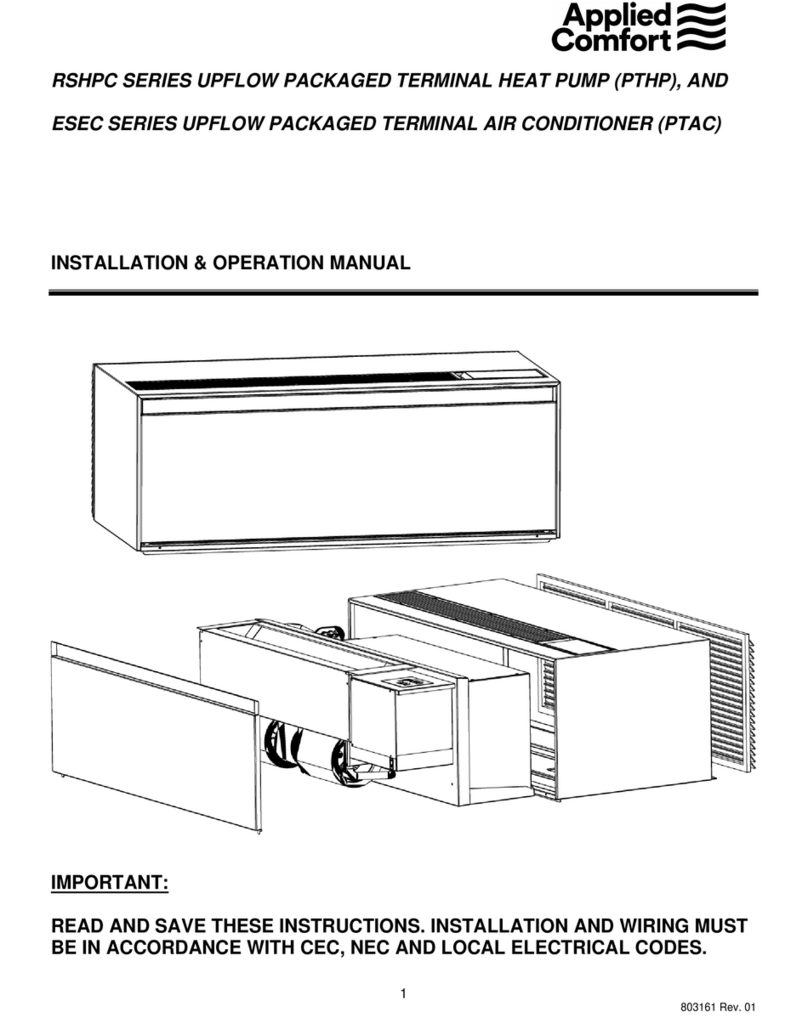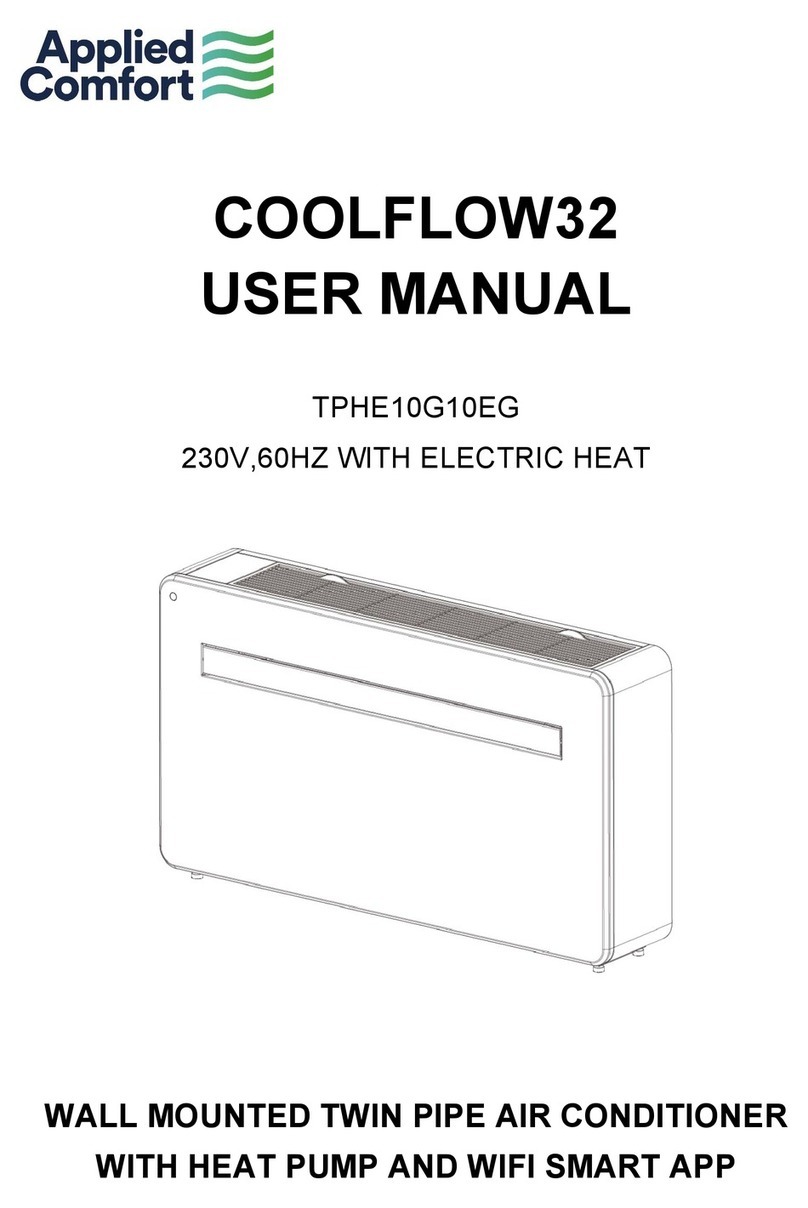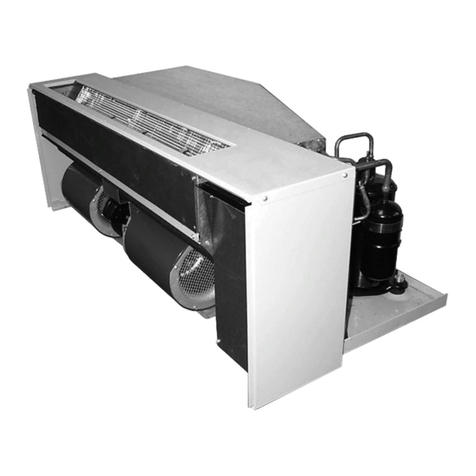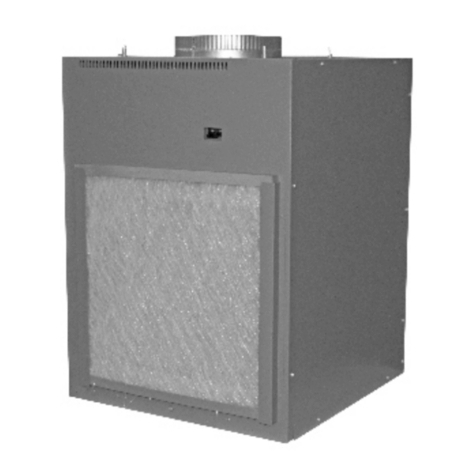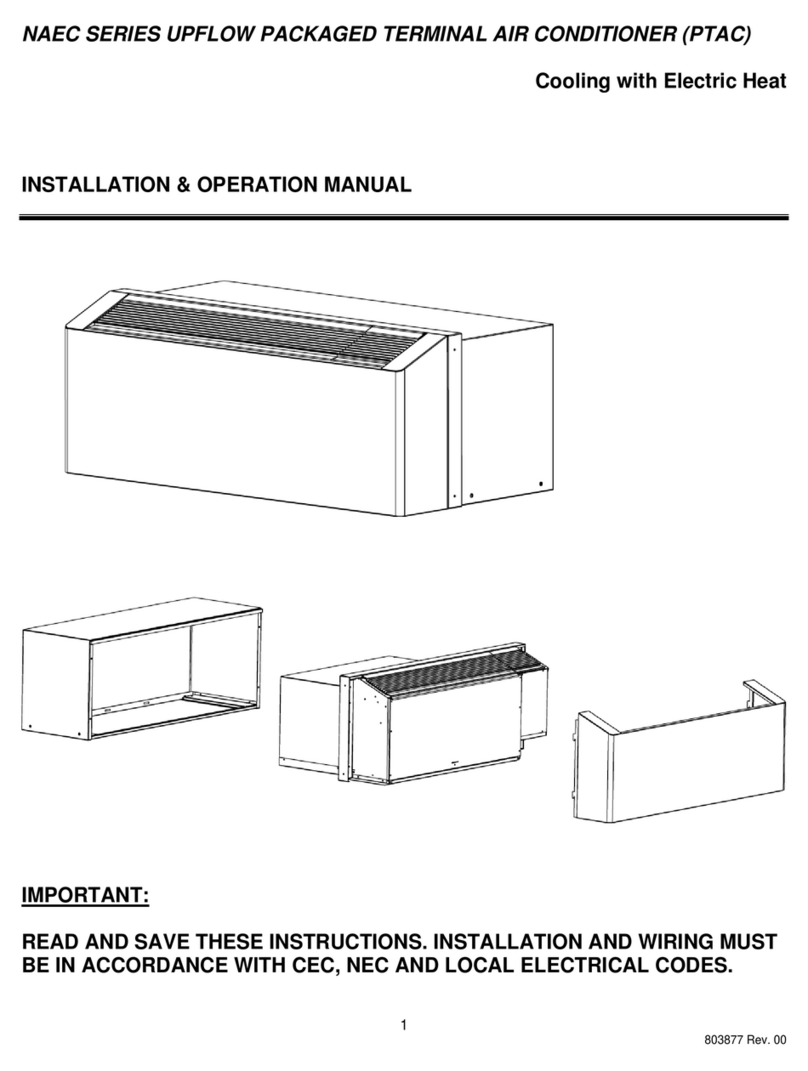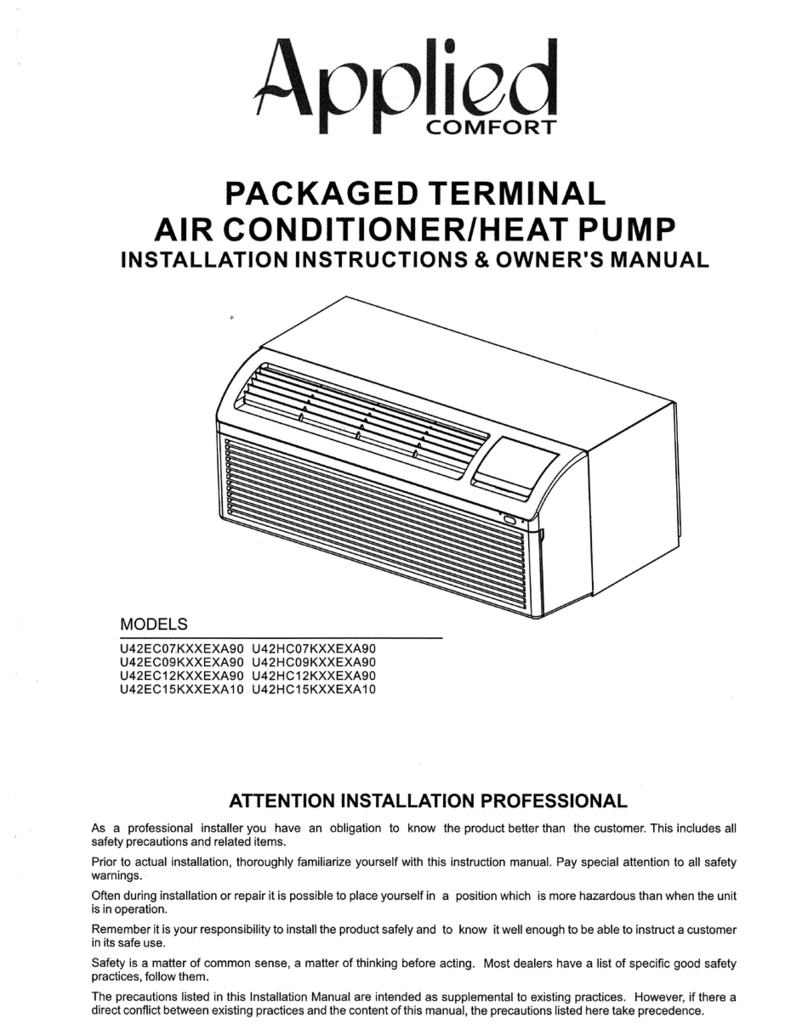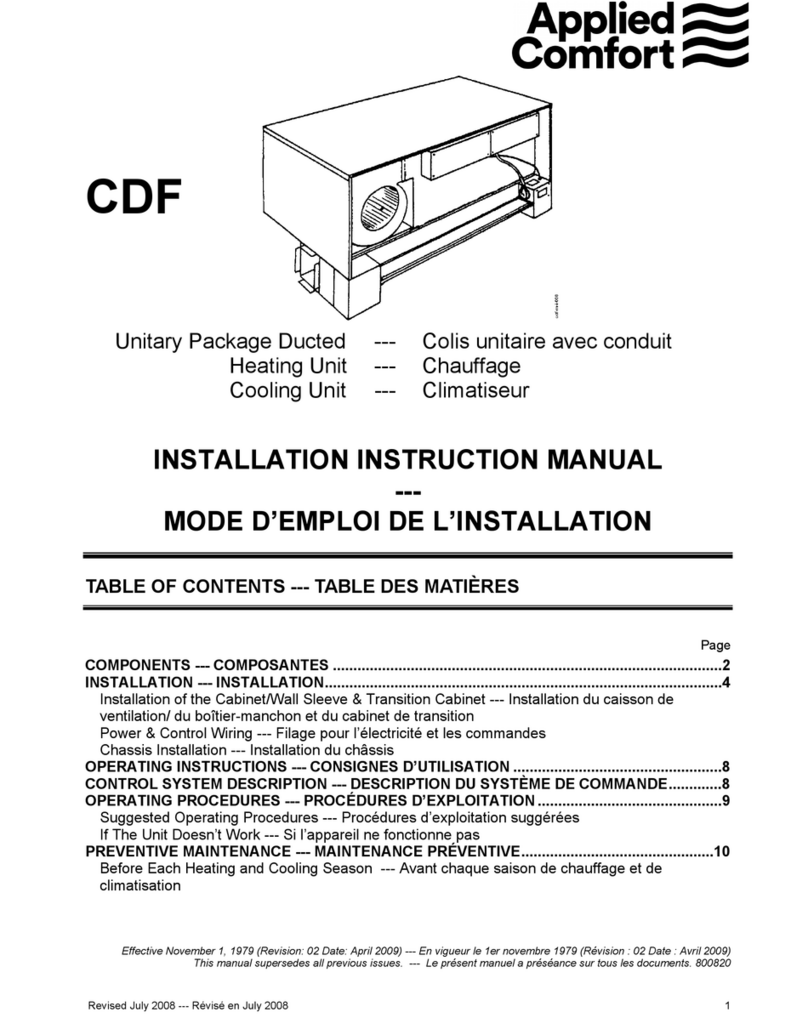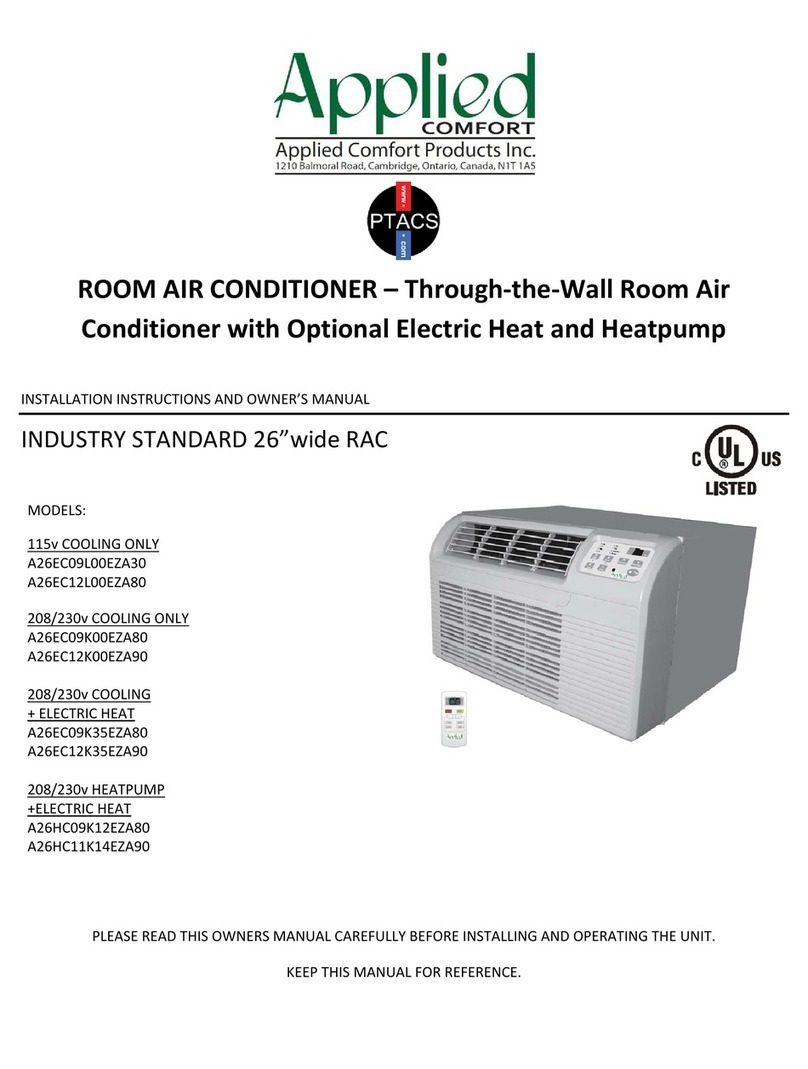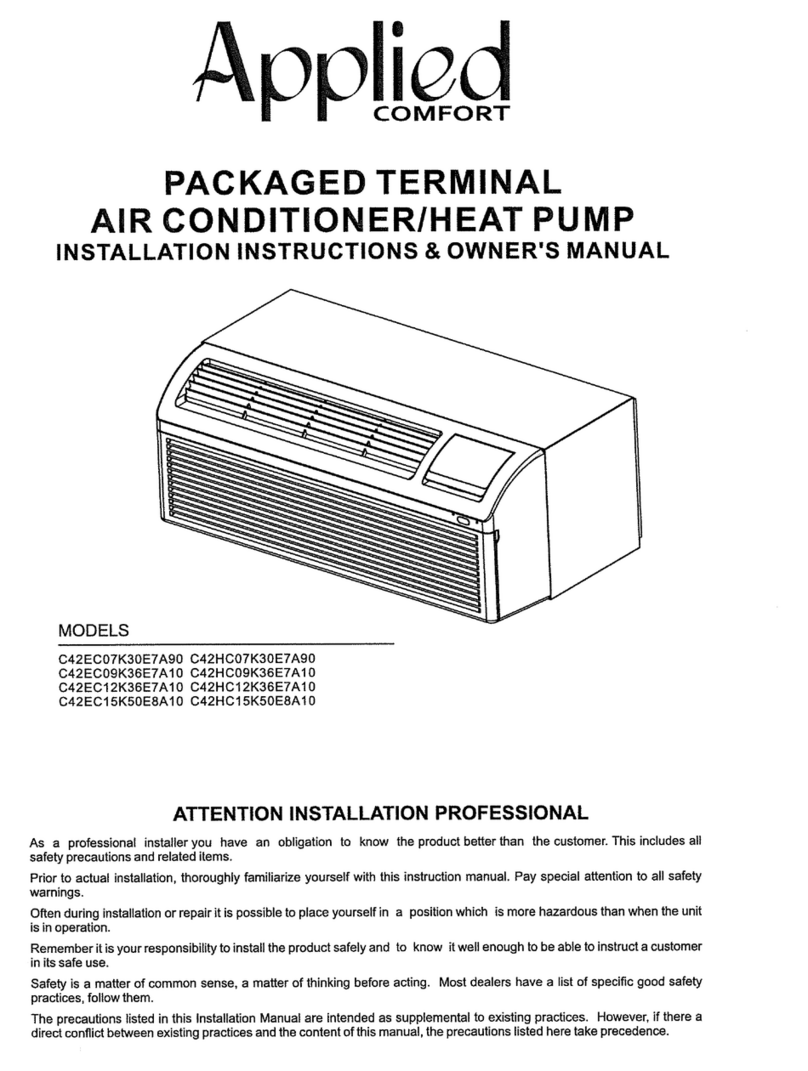
General Information
DO NOT INSTALL CHASSIS INTO SLEEVE WITHOUT FIRST
READING CHASSIS INSTALLATION PROCEDURE.
RECOMMENDATIONS FOR
EFFICIENT OPERATION
·
·
Keep air intake filter clean. Units are provided with a
washable filter that can be cleaned with soap and water
(we recommend monthly). IMPROPERLY
MAINTAINED FILTER OR NOT USING A FILTER WILL
VOID COMPRESSOR WARRANTY.
Don’t block off the outside air flow to the unit. Paper or
other material on the outside of the unit can impair
efficiency and cause serious damage to the compressor.
·
·
·
When unit has been turned OFF, wait three minutes
before re-energizing unit.
In case of power interruption, it is recommended that
the unit be turned “OFF” until power has been restored
for three minutes. (Operation of the air conditioner with
low voltage input can cause serious damage.)
Clean unit coil and oil motors annually. Some motors
are permanently lubricated and do not require annual
oiling.
To avoid property damage, bodily injury or death, ensure power is disconnected before any service is attempted.
Repairs should be made by a qualified air conditioner service technician only.
DANGER
UNIT OPERATION
(For Units Equipped with Heating Option)
THERMOSTAT OPERATION WHEN STARTING:
Set the dial in the mid position to begin operation. After
several hours of operation adjust to desired comfort
setting. No further adjustment is necessary. Your unit
will bring the room back to the desired temperature each
time you turn the unit on.
ADJUSTING DURING OPERATION:
Move the dial a small amount at a time in the direction
you wish the temperature to go. Moving the dial more
than 1/8 inch at a time may overcompensate and lead to
an extreme hot or cold situation.
EMERGENCY HEAT OPERATION
(Heat Pump Units Only)
In the unlikely event of a compressor failure, the electric
heater can be manually energized.
By removing the front panel of sleeve cabinet, you will
find a manual emergency heat switch located on the
lower left side of the chassis in the excess cable storage
area. The switch is marked and
. By moving the switch to
the resistance heat will come on providing the
push-button switch is in the mode. See Figure
12, page 10.
The temperature is controlled through the thermostat.
Remember to turn switch to when the unit
has been repaired.
“EMERGENCY HEAT”
“NORMAL” “EMERGENCY
HEAT”
“HEAT”
“NORMAL”
UNITS WITH LOW TEMPERATURE
THERMOSTAT
Some units may be equipped with a low temperature
thermostat.
This option energizes the fan and electric heater
whenever the room temperature approaches freezing
conditions, regardless of the push-button switch setting.
GENERAL
Temperature control is automatic once you have
selected desired mode of heat or cool and the
temperature you wish to maintain in the room. No further
adjustments are necessary for your comfort control.
The heat pump heating cycle will automatically switch
from heat pump mode to electric resistance heat when
outdoor ambient temperature drops below the design
temperature of the unit.
The buttons on the control panel determine the mode
(heat or cool) and the thermostat pointer on the control
panel determines the room temperature.
2
